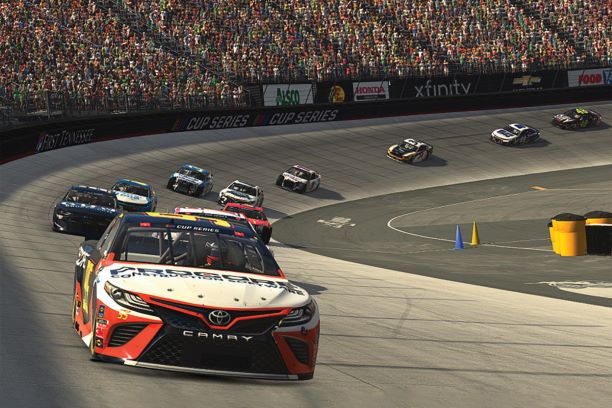With international borders closed, virtual Motorsport has taken the place of real racing, but could it be a glimpse of the future too?
To say 2020 has been a strange year would be an understatement of epic proportions. The Covid-19 virus affected all walks of life and attacked all four corners of the globe. Business, pleasure, life and leisure have all been disrupted in one way or another, however, live Motorsport managed to continue on, albeit virtually.
Motorsport codes such as NASCAR, IndyCar, F1, WRC and even Supercars, all embraced the virtual world and continued to provide live racing for us house-bound petrolheads throughout the lockdown period, using racing simulators to quell our insatiable thirst.
For instance, F1 launched Esports Virtual Grand Prix series which featured a number of current F1 drivers but unfortunately with no official World Championship points up for grabs. The virtual races ran in place of every postponed Grand Prix beginning with the Virtual Bahrain Grand Prix on March 22. The series used the official F1 2019 PC video game and the first virtual GP on the Sakhir track was a 50% length race (28 laps) and was broadcasted on the official Formula 1 YouTube, Twitch and Facebook channels, as well as F1.com.
Due to the wide variety of gaming skill levels amongst the drivers, the game settings were configured in such a way to encourage competitive and entertaining racing. This included running equal car performance with fixed setups, reduced vehicle damage, and optional anti-lock brakes and traction control for those less familiar with ‘gaming’.
Across the codes, the simulators themselves varied in complexity and price but rest assured none of the professional drivers were (or are) sitting on the couch clutching a hand controller. From a ‘simple’ wheel, seat and pedal set up that would cost a few thousand dollars, to an $80,000+ all-encompassing Motion Pro II system with three 55-inch HD screens, a built-in surround sound system, and a motion system that tosses seat and driver around to simulate the G forces actually driving on a track, the experience for the driver is as good as it gets, offering any track, any car, any weather condition and all from the comfort of their own homes.
From an armchair spectators point of view, virtual motorsport is the real deal. The racing is live and even comes with commentary, in fact, what you see on your TV screen is hard to distinguish from reality. The cameras offer views from every natural vantage point including drivers, front and rear, overtaking and trackside, plus there’s advanced on-screen telemetry. The crashes look authentic, there’s pit strategy, tyre wear and even the engineers get to have their say.
So what’s the downside you may well ask and the answer to that lies in one word – fear. Visually, the experience ticks all the boxes and for the driver, most of the systems provide steering and pedal feedback sufficient enough to satisfy, however, it’s the lack of consequences should things go wrong that has the participants fearlessly going hard out. Regardless of the size or extremity of the crash, a simple push of a button has them back in the pits with a rebuilt car, safe and sound and ready to race again.
But whether it’s learning the race tracks, the launch of new tournaments or even as an incubator for fledgeling race drivers, virtual Motorsport certainly has a future. What’s more, the winning looks real enough too, just ask McLaughlin who celebrated his IndyCar win with a glass of milk, a nod to the traditional victory celebration at the Indianapolis 500. However, he cleverly decided against pouring it over his head while sitting in his expensive racing simulator.

